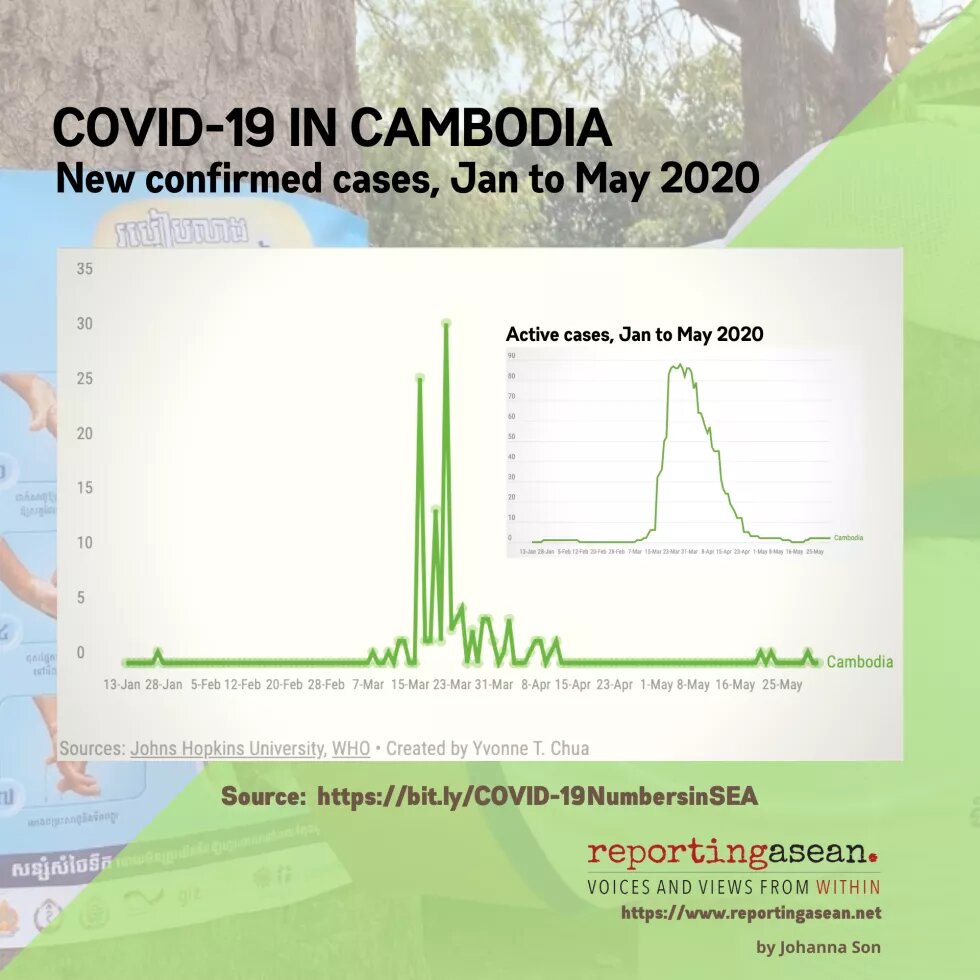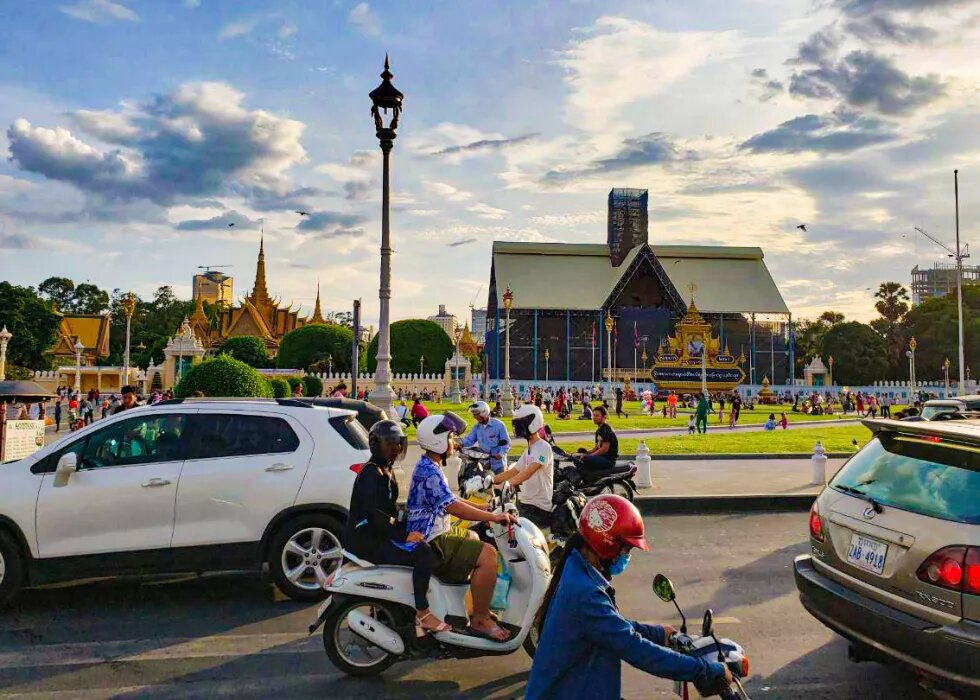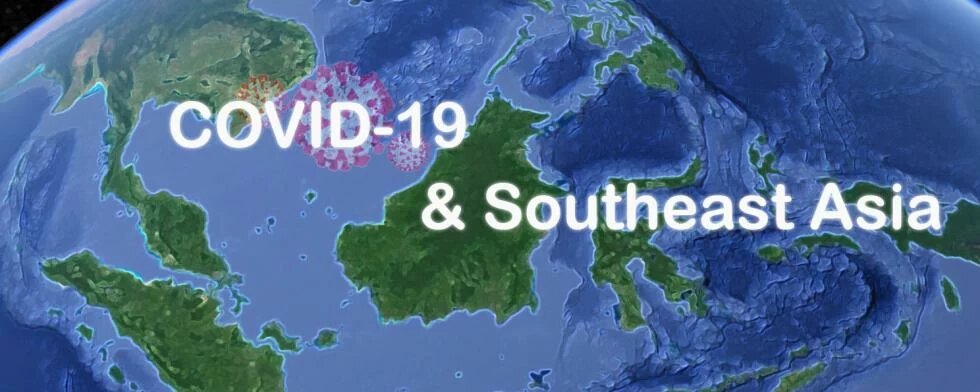
Across the banks of the Mekong River, by the sprawling grounds by the majestic Royal Palace, Cambodians are sitting on the grass or strolling about, sipping coffee outside the cafes that line the riverfront, as motorcycles and ‘tuktuk’ zip by. Traffic on Phnom Penh’s roads is returning to pre-COVID-19 levels of congestion. Acting somewhat like prisoners who have just been freed from jail, many are heading to coastal provinces to reconnect with friends and family.

Much of the usual routines of life in Cambodia’s capital have returned, in stark contrast to the quiet existence that the city of two million people had even up until late April, when worries about the pandemic were still keeping many residents at home and indoors.
There is even a tinge of anticipation in the air these days, akin to a sense of shared victory over an invisible enemy. Tighter restrictions on economic activity and travel were relaxed in late April, without the country seeing a surge in new COVID-19 cases.
“I am excited that we have no new infections,” said 53-year-old Long Sambo, who was sitting inside his three-wheeled cyclo-taxi in front of the Royal Palace grounds, a popular recreation area. “But sadly, I have learnt from the news that many countries in the region are still enduring overwhelming virus infections.”
“If we can maintain our border closures, we will be safe,” said the cyclo-taxi driver, adding that people cannot afford to be careless at this time.
But the signs of ‘relaxation’ in Cambodia are clear. Most residents, especially of Phnom Penh, no longer don face masks. Hand-sanitizer dispensers have disappeared from some shops and restaurants. Museums have reopened. On 20 May, the government lifted a ban on arrivals from six countries with severe COVID-19 outbreaks.
Health authorities have been asking residents to adjust to the new normal, but reminding them to practice good personal hygiene, wear masks and wash their hands often. The government has also ordered inspections of establishments’ precautions for COVID-19.
A 17 March ban on large gatherings such as wedding parties and religious gatherings has been extended to September, and clubs KTVs, gyms and casinos are still closed. Schools have been closed since 16 March.
But even as Cambodia moves toward post-pandemic times, some aspects of life remain far from ‘normal’ for people like Sambo.
Like many cyclo drivers, his bread and butter has become donations instead of paying customers, ever since a sharp drop in customer numbers in March. Recently hired as a carpark assistant near the Royal Palace, he earns one dollar a day and gets three meals.
ON HIGH ALERT FOR A MONTH
Looking back, the COVID-19 situation was taken seriously in Cambodia for just a month, from late March to late April. The country did not have a complete lockdown or compulsory stay-home orders, like neighbouring Thailand and Vietnam.
The number of new COVID-19 cases peaked in late March, reaching 31 in one day, and subsequently dropped to five a day or less. From about five weeks from 13 April, it had no new reported cases. When it did report new cases in May, it was for one new case on three separate days and zero by 31 May.
Its cumulative number of cases since January stood at 125 by end-May, a number that has not changed much since mid-April. Only two of these were active cases, in hospital, by the end of that month, making for a case recovery rate of 98.4%. No deaths have been reported so far.
While Cambodia’s land borders have been shut since late March, it did not impose a total ban on international commercial flights. But since the few new cases are now found mainly in people coming from overseas, authorities have been tightening steps to limit this ‘imported’ channel of transmission. Judging from the case figures, local transmission is no longer active.
On May 27, the health ministry started requiring all inbound passengers (except Cambodian nationals and diplomats) to have health insurance of at least 50,000 US dollars and a fit-to-fly certificate, issued less than 72 hours before, that says they are free of COVID-19. All arriving passengers, regardless of nationality, undergo a swab test, and must do a 14-day quarantine should a fellow passenger test positive.
The Cambodian government shoulders the cost of mandatory quarantine and COVID-19 treatment, which it says costs 2,000 to 2,500 dollars per person.
COUNTER-COVID MEASURES
That the COVID-19 pandemic did not become debilitating to Cambodia has been a relief.
Yet the country has a weak healthcare system. Its health expenditure per capita in 2017 was only around 82 dollars, according to World Bank. It is usual for Cambodians – Prime Minister Hun Sen included –- to seek basic health care overseas. Cambodians on average earn 280 dollars per month, and a garment worker’s minimum wage is 180 dollars a month.
So why, and how, has Cambodia has managed to escape the worst of this pandemic? This is a most frequently asked question.
Health authorities themselves are not quite able to explain exactly how Cambodia has been spared the fate of far more developed nations.
Cambodians from different backgrounds, whom I spoke to, identify various factors behind this apparent success: sufficient government response, the country’s relatively young population and lower population density, perhaps its current development status and hardiness as a society used to difficulties, combined with, well, a bit of luck.
Some of them joked that perhaps Cambodia’s underdeveloped healthcare system and poverty have made its people resilient to viruses. Others wondered: Did the tuberculosis treatments and vaccinations we received in the eighties, in the post-civil war era, give some sort of immunity?
Amused, university graduate Ny Atykunn said: “We have been living in a very filthy environment, which is blanketed by dust or pollution. That perhaps makes our immune system accustomed to being exposed to these kinds of viruses.”
SLOW START
Cambodia’s measures came after a slow and indecisive approach to the pandemic in earlier days.
In fact, in late January Prime Minister Hun Sen threatened to kick out reporters who wore face masks at his press conferences.
On 7 March, a COVID-19 case was reported in the northwestern city of Siem Reap. This was the first since 27 January, which was Cambodia’s very first infection case. A surge in cases followed through March, forcing the country’s leadership to take action.
As in other labour-sending countries, there was concern about COVID-19 cases that could come with the influx of jobless migrant workers returning to Cambodia after Thailand, which is a main destination for work, shut down a huge chunk of economic activities. Some 90,000 Cambodians are said to have returned from Thailand prior to the Khmer New Year in mid-April.
Because the government could not keep all of them in quarantine, the returnees were asked to do self-quarantine at home, with local authorities checking up on them. There was no spike in infections reported from this community.
In coping with the pandemic, Cambodia’s government carried out contact tracing and set up a quarantine system, with technical support from World Health Organization (WHO).
Financial and medical support from different development partners came in handy. Both China and the United States provided help, and so did neighbouring Vietnam, which is ASEAN Chair this year, and whose pandemic response is widely described as a success.
Using what has been called “mask diplomacy”, Cambodia’s ironclad friend, China, shipped more than 20,000 test kits along with ventilators and personal protective equipment to the country in March alone. It dispatched medical teams to the country too. The US government pledged financial assistance of $7.5 million to help Cambodia deal with health and economic impacts driven by the pandemic.
Vietnam donated medical supplies comprising protective gear, face masks, and test kits worth 297,140 dollars on 9 April.
The government adopted a policy of free COVID-19 treatment for locals and foreigners, even if its testing numbers remain limited.
TUKTUK VS COVID
Health authorities also used creative ways to disseminate public health messages around COVID-19, which was valuable in a country where 74% of the population are mobile Internet users, and 58% are active social media users, says the Digital 2020 Report.
Key messages were delivered through education videos, music, even poems, on wearing masks and washing hands, through the Ministry of Health’s Facebook page. A telephone hotline number was made available for COVID-19-related concerns.
Mobile phone service companies swiftly set up voice and text reminders on COVID-19. Interesting was citizens’ initiatives to produce and circulate their own slogans on social networks. One such slogan goes: “Staying at home longer is better than staying at the [Buddhist] stupa forever,” making the point that self-isolation is better than dying from the virus. (The remains of those cremated after death in this mainly Buddhist country are usually kept at a stupa.)
Cambodia also combined these with more conventional methods of messaging, reaching down to people’s immediate neighbourhoods.
It was common to see local officials, working with health authorities, going around communities and using bullhorns to remind people about hygienic habits, and asking them to get tested if they have symptoms. Pre-recorded messages on these issues are played over and over again from bullhorns on ‘tuk tuk’, motorbikes and cars that travel from one village to another.
Local officials stuck posters on COVID-19 measures around their communities.
Cambodia’s demographic profile may have helped too. Half of its population are under 22 years of age, according to the World Population Review. This may be significant since the elderly have tended to be at greater risk of getting more serious infections.
Cambodia’s 16.6 million people are scattered over 181,035 square kilometres, which makes for a density of 95 people per sq km. The result? It was easier than in other places to require safe physical distancing and less face-to-face interaction, as well as curb large gatherings. Phnom Penh has a population density of 5,700 people per sq km. This is much lower than Singapore, Jakarta and Manila, whose population densities are on average 8358, 14,464 and 42,857 residents per sq km.
We have also been asking ourselves if discipline of had something to do with how the pandemic played out.
Supha Sinukreach, a 23-year-old private school teacher, thinks that this kind of discipline is rare in Cambodia, but that many people adopted safer habits after accessing online platforms and local news sites. He says he uses the daily updates from the Ministry of Health’s Facebook page. “I observed that most people here follow the advice and this can be attributed to sufficient information and knowledge they have received from either the government agencies, media or even social media,” Sinukreach said.
For others, social support networks matter along with relationships with persons of authority and seniority, be it elders in the family, work or local community. My parents called me regularly from Siem Reap to instruct me to stay watchful, to stay home as much I can and to wear a mask if I go out.
FROM HISTORY, A FEAR OF DEATH
But Sambo, a survivor of the reign of the genocidal Khmer Rouge, sees things through a different lens. For him, discipline comes from a fear of the state. This perspective has been shaped the fact that Cambodians live with the legacy of the slaughter of more than 2 million people between 1975 and 1979.
“I think the Pol Pot [regime] is very different, despite its ruthlessness, because we could see it (genocide) happening, but the virus is different. We don’t know where it is and the exact way (to use) to avoid being infected,” Sambo said, when asked to compare how people responded during the pandemic and during the Khmer Rouge years.
“But the three-decade long civil war and massive destruction we had gone through may have taught us something – a fear of death,” explained Sambo. “So (now) we do whatever we are told.”
“We may see it as an overreaction, but to me it is a reminder to stay cautious and disciplined during these times of crisis,” he said. “Even those who are poor like me, who always say that filling one’s stomach matters more than contracting the virus, still follow the (health) instructions,” he added, chuckling a bit.
What Sambo describes does reflect the grit that Cambodians possess, as well as their survival instincts. But these come with a weakness: we forget. Already, many of us have become lax in our precautions against COVID-19.
POVERTY – AND LUCK
There are also the bare realities, perhaps unexpected ‘advantages’ during this crisis, of being a poor country.
While congested societies grapple enforcing physical distancing in public transportation, such a challenge does not quite apply in a country like Cambodia, where efficient transport infrastructure barely exists. It has just municipal inter-city buses, whose operations were suspended when the pandemic began. Bus travel between provinces is now allowed, but with precautions required of transportation companies since early April.
Cambodia also gets much fewer international visitors and foreign residents than other Southeast Asian countries. While Thailand gets up to 39 million international visitors, Cambodia received just about one-eighth of that amount, or around 5 million in 2019. It has around 100,000 foreign residents, a good number of them working with development organizations.
Then, there is an important element to take account of: luck.
In the COVID-19 pandemic in Cambodia, the fact that widespread community transmission did not happen, made a huge, life-saving difference.
According to World Health Organization data in mid-May, some 70 percent of Cambodia’s total confirmed cases were acquired abroad, and the remaining ones linked to these ‘imported’ cases. Identifying this trend helped authorities zero in on a system of tracking, contract tracing and putting into quarantine people who had the virus, as well as their contacts – thus largely cutting off local transmission. WHO has also acknowledged these as key in Cambodia’s slowing down the virus’ spread.
The ‘China factor’ also did not play a major role in coping with the pandemic, even if it stoked prejudice and blame in other countries.
Chinese nationals make up the biggest number of foreign tourists in Cambodia, accounting for 38.3% of foreign arrivals in the first 10 months of 2019, says the tourism ministry. The coastal province of Preah Sihanouk is a popular destination for visiting Chinese, but most had left after the government banned online gambling operations nationwide in August 2019. Outbound travels from China had also already fallen around the lunar new year in January, due to the pandemic in that country.
A less than positive perception of China has around for some time among some Cambodians, virus or no virus. This, however, has been shaped by the country’s interactions with China in politics, society and business, instead of being heavily coloured by the fact that COVID-19 first emerged in China’s Wuhan province.
“I don’t care about who is to blame for the virus, but I could know where it is from. However, there is no reason to get mad at China because it [virus] is more of a product of natural process,” ‘tuktuk’ driver Kuy Samang said.
Despite losing his means of livelihood, Sambo says, calmly, that Cambodians have been through so much that he believes they will overcome this hardship too. “At my age, like many Cambodians, I have witnessed a lot of disasters – not only civil war, but social and economic crises such as starvation, severe poverty, prevalent HIV/AIDS and malaria epidemics, as well global economic crashes,” he mused. “But (still) here we are.”
__
This article is published by Heinrich-Böll-Stiftung Southeast Asia and Reporting ASEAN
Reporting ASEAN is a homegrown, independent venue for the discussion of news and issues around regionalism, highlighting voices and views from within Southeast Asia. Its focus includes coverage of the idea of an ASEAN, which goes far beyond the regional association ASEAN, as well as the training of journalists from the region. It follows conversations around the news media and journalism in Southeast Asia, from disinformation and misinformation to interesting ways of storytelling.
This article is a part of Web-Dossier: COVID-19 and Southeast Asia





